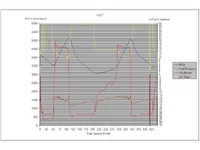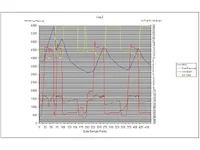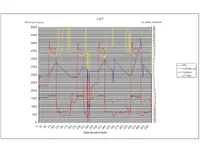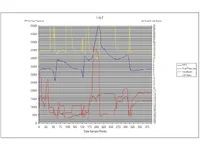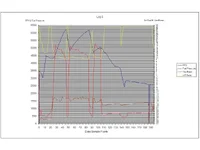The thing with this question is there isn't one single ideal A/F ratio (although people will argue that there is). You'll see slight variations in our car, tending towards running rich rather than lean, through each gear and the range of RPM.
The problem is this: the heat, power and fuel economy needs changed based on use, and the time available to burn your charge changes as you accelerate (more time to manage combustion at 1,000 rpm than at 6,000 rpm, for example). At each gear, at different loads, during different points in the RPM range, a different A/F ratio will better meet the needs of the motor in terms of these competing needs. We run rich as a rule to keep things a bit cooler, but that's not the ideal mix for power. It keeps temperatures down, however, which is good for engine wear and tear. It really does depend on what you want.

